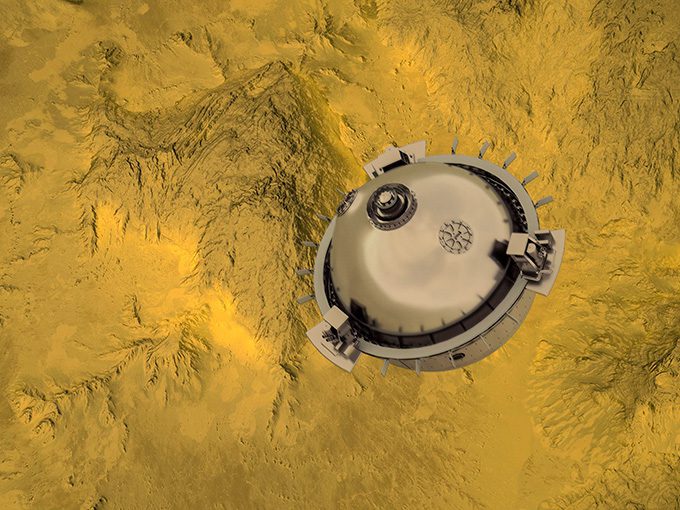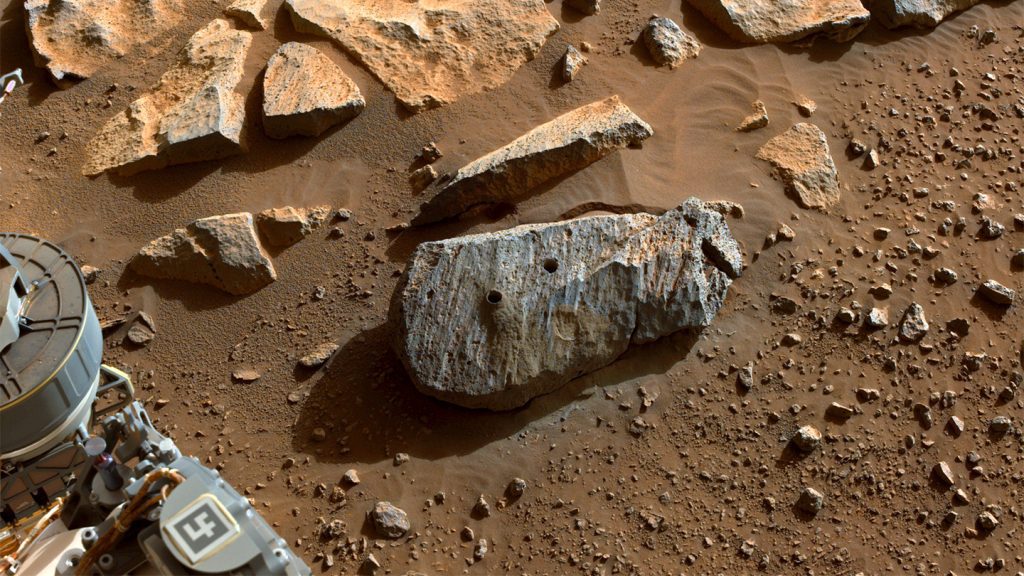Hopes of exploring the universe have been hindered by budget cuts in the United States. The 2024 federal budget approved by Congress earlier this year left NASA with about $500 million less than in 2023, with Mars science being the most affected.
Scientists are working hard to find a way to still carry out a long-planned mission to bring samples back from Mars. Probes meant for other planets and moons are postponed, and the Chandra X-ray Observatory, launched in 1999, is at risk of being eliminated.
Casey Dreier, chief of space policy at The Planetary Society in Pasadena, Calif., notes that NASA had experienced a continuous increase in funding from 2014 to 2023, with an average annual increase of over 3 percent.
Dreier states, “That made it easy to take on new projects. There was room for growth, and everyone could benefit. But that era has ended.”
The 2024 budget allocates $24.875 billion to NASA, which is a 2 percent reduction from the previous year and 8.5 percent less than the requested amount — the biggest difference since 1992.
The approval of the budget left NASA administrators to figure out how to adjust and cover the $509 million shortfall.
Nicola Fox, NASA’s associate administrator for science, acknowledged the challenging situation, saying “We know we are definitely in an imperfect environment, and we acknowledge this is a very challenging time during a public town hall. However, she assured that NASA “will use every single penny to do great science.”
The Mars Sample Return mission is facing significant cuts
Originally planned to bring rock and soil samples back from Mars by 2033, the Mars Sample Return mission is now facing uncertainties due to budget cuts. Even before the cuts, there were doubts about the program’s ability to meet its goals on time and within a reasonable budget, which was prioritized in 2022 as part of planetary scientists’ decadal survey, could meet its goals on deadline and at a reasonable cost (SN: 4/20/22). The budget cuts now mean the mission is on hold as NASA tries to determine if it can be done at all.
The Perseverance rover, which arrived on Mars in 2021, is currently gathering material from specific locations with the goal of collecting 38 samples in total ( after landing on Mars in 2021). The rocks and soil could provide insights into the formation of the inner solar system, the history of water on Mars, and potential signs of past life on the planet. Yet bringing these samples back from such a great distance is one of the most challenging mission proposals ever, requiring a vehicle that could launch from the Martian surface and a method to transfer the samples to a second rocket in space to prevent potential contamination of Earth. The estimated cost for the mission is between $5 billion and $7 billion. NASA had aimed to allocate around $950 million to it this year. two separate groups that review and evaluateSN: 2/17/21The total cost for sample return was estimated to be much higher by two independent review boards, possibly exceeding $11 billion — which NASA administrators found to be unacceptable. In response to the approved budget, the funding for the program in 2024 was decreased by $630 million, essentially covering the entire amount of the necessary cost cutting that NASA needed to do and allowing for some other programs to receive modest budget increases.
“The entire agency suffered a setback in the Mars Sample Return program,” Dreier says. The money taken from this program, which is part of the planetary science division, “essentially saved every other science division.”
But NASA plans to allocate only $300 million for the sample return mission this year and $200 million next year, which is just enough to continue the program as its future is determined. Although it’s still uncertain how much money NASA will receive next year, the 2025 budget requested by the Biden administration has been reduced. The Jet Propulsion Laboratory in Pasadena, which is mainly responsible for designing and constructing the components of the sample return, “lost hundreds of millions of dollars practically overnight,” Dreier says. The budget uncertainty had already led the center
to announce that it would lay off 530 employees
, which is 8 percent of its staff, in February. “I’m confident that you will see more layoffs at JPL and possibly other NASA centers that were involved in Mars Sample Return,” Dreier says.
Meanwhile, NASA has issued a request for proposalsasking other NASA centers and engineers in the industry to suggest new and inventive ways to bring back at least some of the samples in a more cost-effective manner. This may require deciding which of the originally planned collection of samples —
have been gathered so far — are most valuable. Missions to other planets are postponed However, this doesn’t mean that other missions are unaffected. A dedicated orbiter for exploring the ice giant Uranus — the second priority in the 2022 decadal survey after the Mars sample return — has had its timeline pushed back. Since ice giants are among the most common types of exoplanets being discovered around other stars, researchers are eager to understand those in our own solar system. However, the researchers assigned to plan the effort “won’t even start considering that mission until 2028 at the earliest,” Dreier says. 24 of which DaVinci and Veritas, two missions to investigate Venus, are also facing delays, and there’s now more uncertainty about which, if any, other probes on the drawing board — those intended to retrieve samples from a comet or fly through the plumes of Saturn’s moon Enceladus — will move forward.
The DAVINCI probe, which is one meter wide, is scheduled to capture images and conduct chemistry measurements of the Venusian atmosphere, but budget reductions could postpone the mission.
NASA GSFC visualization by CI Labs Michael Lentz and others
All of this will result in less immediate research on the formation and movements of planets and their moons. “We overlook how little we’ve explored the solar system we inhabit,” Dreier says. Scientists are clamoring to explore it, he adds, and that’s all being delayed.

The first Artemis test, a unmanned trip around the moon,
completed its journey successfully
SN: 12/12/22
). Future missions will evaluate how astronauts adapt to space exploration and bring back new rock samples from the moon, including from the lunar south pole, where some of the satellite’s oldest rocks are located. Although Smith predicts that upcoming Artemis missions may face delays, she believes there is enough momentum to ensure they will eventually happen. There is widespread support in Congress for the program, as they view it as crucial for staying ahead of China, which also intends to send people to the moon in the near future. in 2022 (Budgets for other NASA divisions remain unchangedNASA’s planetary science division is being impacted more by the budget cuts than the Earth science, biological and physical sciences, and heliophysics divisions, which are mostly experiencing flat funding. A smaller increase than requested for NASA’s astrophysics division is leading to increased scrutiny of some of its projects.
Strong shock waves traveling through the core of a deceased star called Tycho’s Remnant emit bright light in high-energy wavelengths, allowing NASA’s Chandra X-Ray Observatory to capture this stunning image. The 25-year-old telescope is still operational but limited funding at the agency could result in its closure.
T. Sato et al/RIKEN & GSFC/CXC/NASA; Optical: DSS
The budget for this year and expectations for next year have led NASA to review its existing flagship telescopes, the Chandra X-ray Observatory and the Hubble Space Telescope, to determine if either can be phased out. Both were launched as part of the first generation of Great Observatories in the 1990s and early 2000s, and they have already seen their counterparts, the Compton Gamma Ray Observatory and Spitzer Space Telescope, deactivated.

said in a meeting with members of Congress
that Chandra has provided many valuable contributions, but it is now time for new projects.
Information on what will happen to the telescope is anticipated soon, although the exact timing is not known. Efforts to bring back samples from Mars and missions to explore other planets and space objects, such as lunar missions, are encountering significant reductions and postponements. that “Chandra has given us so many gifts,” but “it’s time for new missions.”
Answers on the telescope’s fate are expected in the near future, though it’s unclear exactly when.



